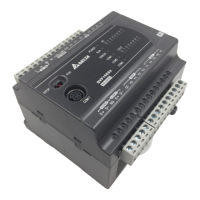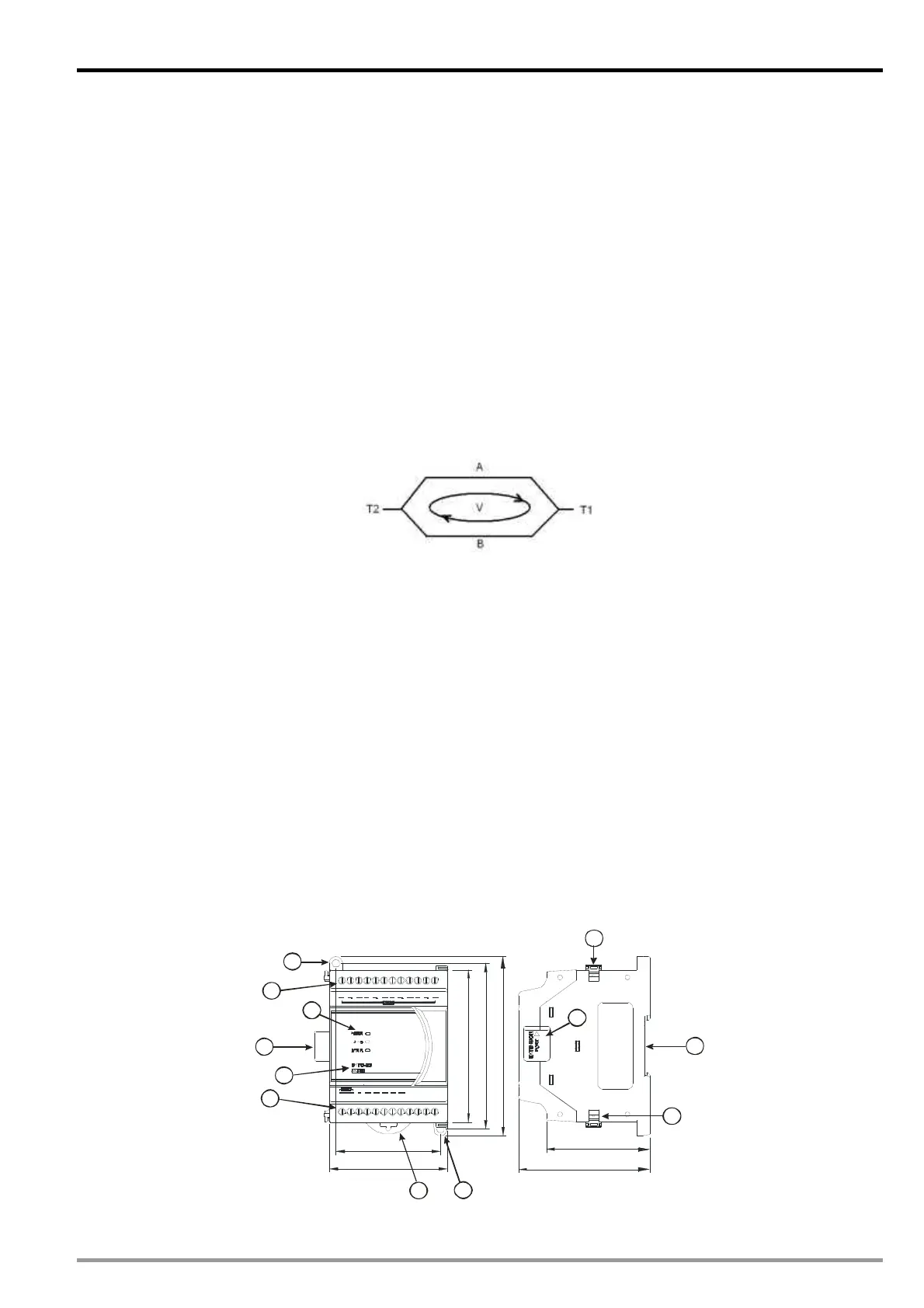5 Temperature Measurement Module DVP 04TC-E 2
5.1 The Thermocouple Temperature Sensor
The thermocouple is generated by Seebeck Effect. Generally, a thermocouple is composed of conductors of two
different materials. When a temperature difference occurs at the two ends of the thermocouple, the thermocouple will
generate a voltage signal in proportional to the temperature difference. The voltage signal ranges from tens of uV to
thousands of uV; therefore, we need to magnify the voltage when using it.
The thermocouple temperature sensor indicates temperature by differential voltage, and it has already eliminated
external interferences when two pairs of data are performing differential operation. Therefore, it is much more stable
than a thermistor, resistive thermometer or thermal resistor and is widely applied in the industry.
The thermocouple is a loop constructed by two different metallic wires welded or twisted together (see the figure
below). Different metals make two junctions in the loop. One junction is called “measuring junction” or “hot junction”,
and the other is “reference junction” or “cold junction”. Placing the two junctions in different temperatures will cause a
loop voltage (i.e. Seebeck Effect), and the loop voltage is in proportional to the temperature difference between the
two junctions.
The loop voltage and the two junctions equate:
2
1
T
T
BA
dTQQV
(A)
In which Q = the heat conduction coefficient of the metal
How a thermocouple works
In fact, the heat conduction coefficient of Q
A
and Q
B
have nothing to do with the temperature. Therefore, equation (A)
can be simplified into equation (B), a more frequently used equation:
V = α (T
2
-T
1
) (B)
There are two types of thermocouple thermometers, wrapped thermocouple and bare thermocouple. The wrapped
thermocouple is wrapped with a layer of metal as protection, similar to an electrically-heated spoon. The wrapped
thermocouple is used for measuring temperature of liquid and the bare thermocouple is for measuring gas
temperature. Different thermocouples sense different temperature ranges and output signals, and the maximum
temperature sensible varies with different materials and wires of different diameters.
5.2 Introduction
DVP04TC-E2 is able to receive 4 points of external thermocouple temperature sensors (J-type, K-type, R-type,
S-type, T-type, E-type, N-type, 80mV) and convert them into 16-bit digital signals. The data in DVP04TC-E2 can
be read/written by using FROM/TO instructions or D9900 ~ D9999 in the program of DVP-PLC MPU. You can select
temperatures in Celsius (resolution: 0.1°C) or Fahrenheit (resolution: 0.18°F).
5.3 Product Profile & Outline
5.3.1 DVP04TC-E2
70
62
106
98
78
90
61.5
2
1
4
5
9
6
6
7
7
8
8
3
++ + +
Unit: mm
DVP-ES2 Module Manual
-1

